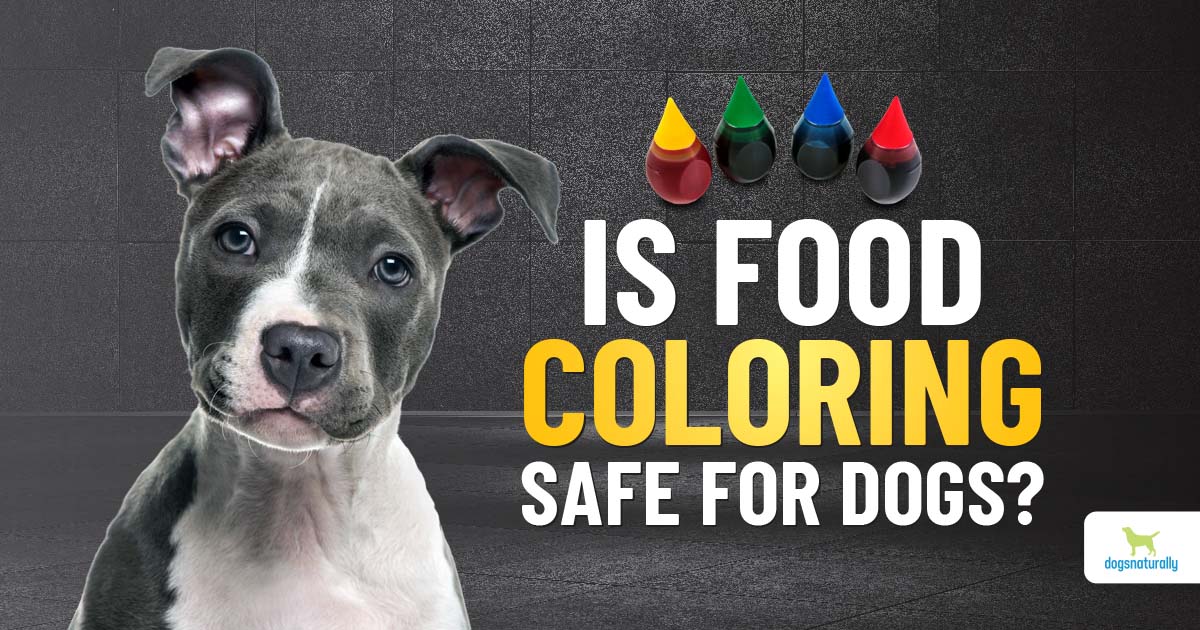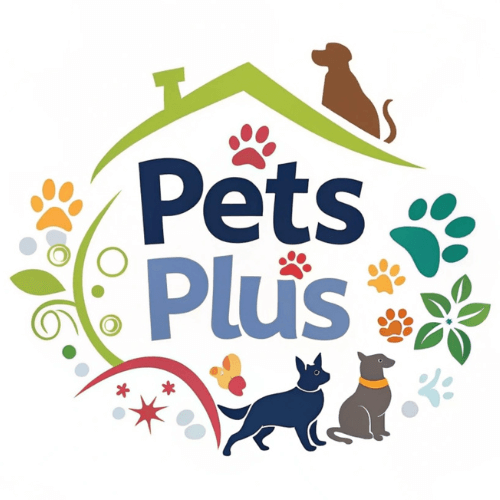As pet owners, we all want to ensure the safety of our furry friends. We spend time researching the best foods, treats, and toys to keep them healthy and happy. One thing that often goes overlooked, however, is the use of food coloring in our pet’s food. Many of us assume that if it’s safe for us to eat, it must be safe for our dogs. But is that really the case? Is food coloring bad for dogs?
Food coloring is a common ingredient in many human foods, including candy, baked goods, and processed snacks. However, when it comes to our pets, the use of food coloring is a bit more complicated. While some types of food coloring may be safe for dogs in small amounts, others can be toxic and potentially life-threatening. In this article, we will explore the dangers of food coloring for dogs, common types of food coloring found in pet foods, and provide tips for choosing safe and healthy foods for our furry friends.

Is Food Coloring Bad for Dogs?
Food coloring has long been used to enhance the appearance of human food. However, the use of food coloring in pet food has raised concerns about its safety for dogs. In this article, we will explore whether food coloring is bad for dogs and what you need to know about the risks and benefits of using food coloring in your dog’s food.
What is Food Coloring?
Food coloring is a substance that is added to food to enhance its color or appearance. It is commonly used in human food, but it is also found in many types of pet food. Food coloring is made from various chemicals, including synthetic dyes and natural substances such as beet juice or turmeric.
While food coloring is generally considered safe for human consumption, its safety for pets is still a topic of debate. Some studies have suggested that food coloring can cause health problems in dogs, while others have found no adverse effects.
What Are the Risks of Food Coloring for Dogs?
One of the main concerns about food coloring in dog food is that it can cause allergic reactions. Some dogs may be sensitive to certain types of food coloring, which can lead to itching, rashes, or other symptoms. In addition, some studies have suggested that food coloring can cause hyperactivity or behavioral problems in dogs.
Another risk of food coloring in dog food is that it can be a source of toxins. Some food coloring dyes are made from coal tar, which is a byproduct of petroleum. These dyes have been linked to cancer in humans and may also be harmful to dogs.
Benefits of Food Coloring for Dogs
While there are risks associated with food coloring in dog food, there are also some potential benefits. Food coloring can make the food more visually appealing to dogs, which may encourage them to eat more. In addition, some types of food coloring, such as beet juice, may have health benefits for dogs.
Vegetable-Based Food Coloring
Vegetable-based food coloring is a safer alternative to synthetic food coloring. It is made from natural substances such as beet juice or turmeric, which are not harmful to dogs. Vegetable-based food coloring can also provide health benefits for dogs, as these substances are rich in vitamins and antioxidants.
Synthetic Food Coloring
Synthetic food coloring is made from chemicals such as FD&C Red No. 40 and Yellow No. 5, which are derived from petroleum. These dyes have been linked to health problems in humans and are not recommended for use in dog food.
How to Choose Safe Dog Food
When shopping for dog food, it is important to read the ingredient list carefully. Look for foods that use natural ingredients and avoid those that contain synthetic food coloring. If your dog has a food allergy, be sure to choose a food that does not contain any of the allergens.
Conclusion
In conclusion, food coloring can be both good and bad for dogs, depending on the type of coloring used. While natural vegetable-based coloring can provide health benefits, synthetic food coloring can be a source of toxins and cause allergic reactions. When choosing dog food, it is important to read the ingredient list carefully and choose foods that are safe and healthy for your dog.
Frequently Asked Questions
As a dog owner, it’s important to be aware of the potential risks associated with feeding your dog certain foods. One common question that many pet owners have is whether or not food coloring is bad for dogs. Here are some answers to common questions about food coloring and dogs.
What is food coloring and why is it used in dog food?
Food coloring is a substance that is added to food to change its color. In dog food, coloring is often used to make the food more visually appealing to pet owners. Some pet food manufacturers also use food coloring to help differentiate between different types of dog food, such as different flavors or varieties.
While food coloring is generally considered safe for dogs, it’s important to note that some dogs may be sensitive to certain types of coloring. For example, some dogs may experience digestive issues or allergic reactions after eating food that contains artificial food coloring.
What are the potential risks of feeding my dog food that contains food coloring?
The potential risks of feeding your dog food that contains food coloring depend on the type of coloring used and your dog’s individual sensitivity. Some dogs may experience digestive upset, such as vomiting or diarrhea, after eating food that contains artificial coloring. Additionally, some dogs may be allergic to certain types of food coloring, which can cause symptoms such as itching, swelling, or difficulty breathing.
If you’re concerned about the potential risks of feeding your dog food that contains food coloring, it’s always best to talk to your veterinarian. Your vet can help you determine whether or not your dog is at risk of experiencing any adverse effects from eating food that contains coloring.
Are there any natural alternatives to artificial food coloring that I can use in my dog’s food?
If you’re concerned about the potential risks of feeding your dog food that contains artificial food coloring, there are some natural alternatives that you can consider. For example, some pet food manufacturers use natural food coloring sources such as beet juice, turmeric, or annatto extract to color their dog food.
Additionally, you can also consider making your own dog food at home using ingredients that are naturally colorful, such as carrots, sweet potatoes, or spinach. This can be a great way to ensure that your dog is getting a healthy, nutritious diet without any artificial additives or coloring.
What should I do if my dog has an allergic reaction to food coloring?
If your dog experiences an allergic reaction to food coloring, it’s important to seek veterinary care right away. Your veterinarian can help diagnose the allergy and provide treatment to manage your dog’s symptoms. This may include medications such as antihistamines or steroids to reduce inflammation and relieve itching, as well as dietary changes to avoid foods that contain the offending coloring.
In some cases, your veterinarian may recommend allergy testing to help identify the specific allergen that is causing your dog’s symptoms. This can be helpful in developing a long-term management plan for your dog’s allergies.
How can I ensure that my dog is getting a healthy, balanced diet?
Feeding your dog a healthy, balanced diet is essential for maintaining their overall health and well-being. When choosing dog food, look for brands that use high-quality, whole-food ingredients and avoid additives such as artificial food coloring.
You can also consider working with a veterinary nutritionist to develop a customized diet plan for your dog based on their individual needs and preferences. This can help ensure that your dog is getting all of the nutrients they need to stay healthy and happy for years to come.

Dangers of food dyes | Effect of food dyes on health | How food dyes affect your children
As a professional writer, I can confidently say that food coloring can be harmful to dogs. While food coloring is generally safe for humans, it can cause a range of health problems in dogs, including allergic reactions, digestive issues, and even cancer. In fact, many veterinarians recommend avoiding food products with artificial colors altogether.
While some pet owners may be tempted to give their furry friends colorful treats, it’s important to remember that dogs have different nutritional needs than humans. What may be harmless to us can be toxic to them. Instead of relying on artificial colors, pet owners should focus on providing their dogs with a balanced diet of high-quality protein, healthy fats, and essential vitamins and minerals.
In conclusion, as a responsible pet owner, it’s important to be mindful of what we feed our dogs. While a splash of color may make a treat look more appealing to us, it’s best to avoid food products with artificial colors altogether. By providing our furry friends with a healthy, balanced diet, we can help them live happy, healthy lives.
